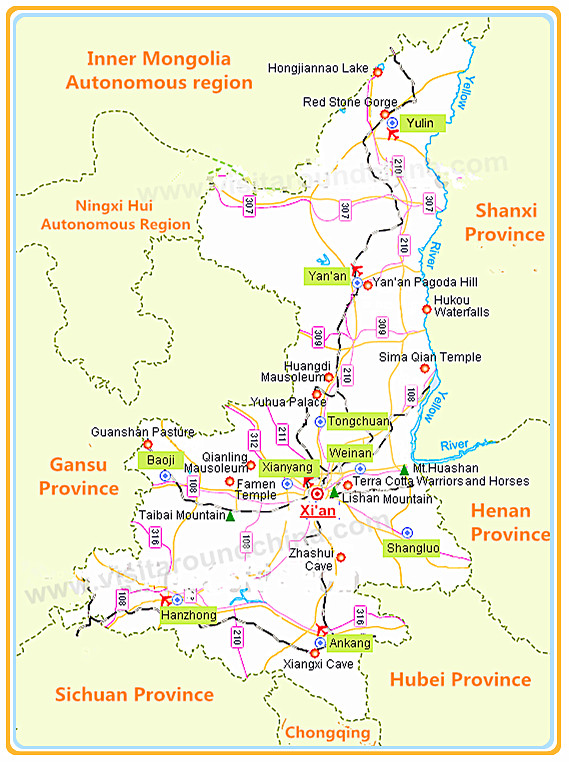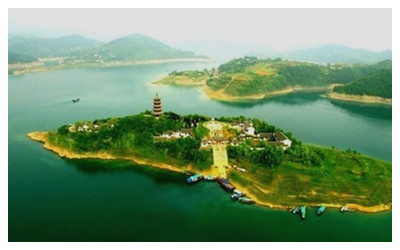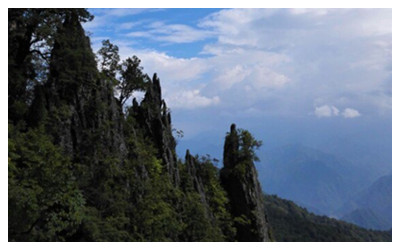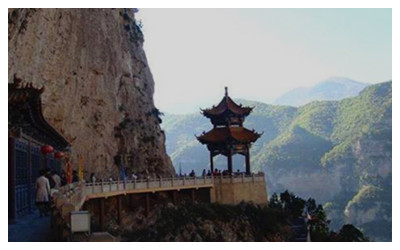Skype: neodalle-travel
Tel: +86 135 7447 2266
E-mail: sales@zhangjiajieholiday.com
 Ankang City is a prefecture-level city of Shaanxi Province. Located in the southeast of Shaanxi, Ankang neighbors Xian in the north, and shares boundaries with Hubei Province in the east and Sichuan Province in the south. The city has an advantageous geographic position at the convergence of Shaanxi, Hubei, Sichuan and Chongqing.
Ankang City is a prefecture-level city of Shaanxi Province. Located in the southeast of Shaanxi, Ankang neighbors Xian in the north, and shares boundaries with Hubei Province in the east and Sichuan Province in the south. The city has an advantageous geographic position at the convergence of Shaanxi, Hubei, Sichuan and Chongqing.Ankang Facts
Chinese Name: 安康市 (ān kāng shì)
Population: 2,949,700
Area: 23,529 square kilometers (9,085 square miles)
Nationalities: Han
Administrative Division: 1 district (Hanbin); 9 counties (Hanyin, Shiquan, Ningshan, Ziyang, Langao, Pingli, Zhenping, Xunyang, Baihe)
Ankang History
Ankang has a long history. Ancient tribes living in this area were conquered by the Chu Kingdom in the Spring and Autumn Period (770 BC - 476 BC). It was a vital place contested by Qin and Chu kingdoms during the wars in Warring States Period (476 BC - 221 BC), and then it belonged to the Hanzhong Shire, established by the Qin Dynasty (221 BC - 206 BC).
What to see in Ankang?
Ankang lies at the north foot of Daba Mountain, south of the Qinling Mountains. The Han River flows through the city from west to east. Its highest point is in the eastern part of the Qinling Mountains with an altitude of 2,965 meters , while the lowest is in the outlet of the Han River from the city's territory, only 170 meters above the sea level. Here we list top Ankang attractions.
 |
 |
 |
Yinghu Lake |
Nangongshan Forest Park |
Xiangxi Cave |
When to visit Ankang?
Having a subtropical continental monsoon climate, Ankang weather is warm but dry in spring, and overcast and rainy in autumn. Summer is rainy but may be attacked by drought, while the winter is chilly, seldom rainy or snowy. Warm springs and cool autumns are the best seasons to visit this place.
How to get to Ankang?
1. Ankang Airport is 8.1 kilometer from the downtown area. At present, it only operates flights shuttling from Xian with 40-minute flight.
2. Ankang is a four-hour ride from Xian by train, and ten hours by bus.
Ankang Tarvel Tips
Special Local Products: green tea, winter peaches
Useful Telephone Numbers:
Tourist Complaints:0915-3202169
Weather Forecast:121
Zip Code Inquiry:184
Bank of China: 0915-3202302
 Ask Questions ?
Ask Questions ?